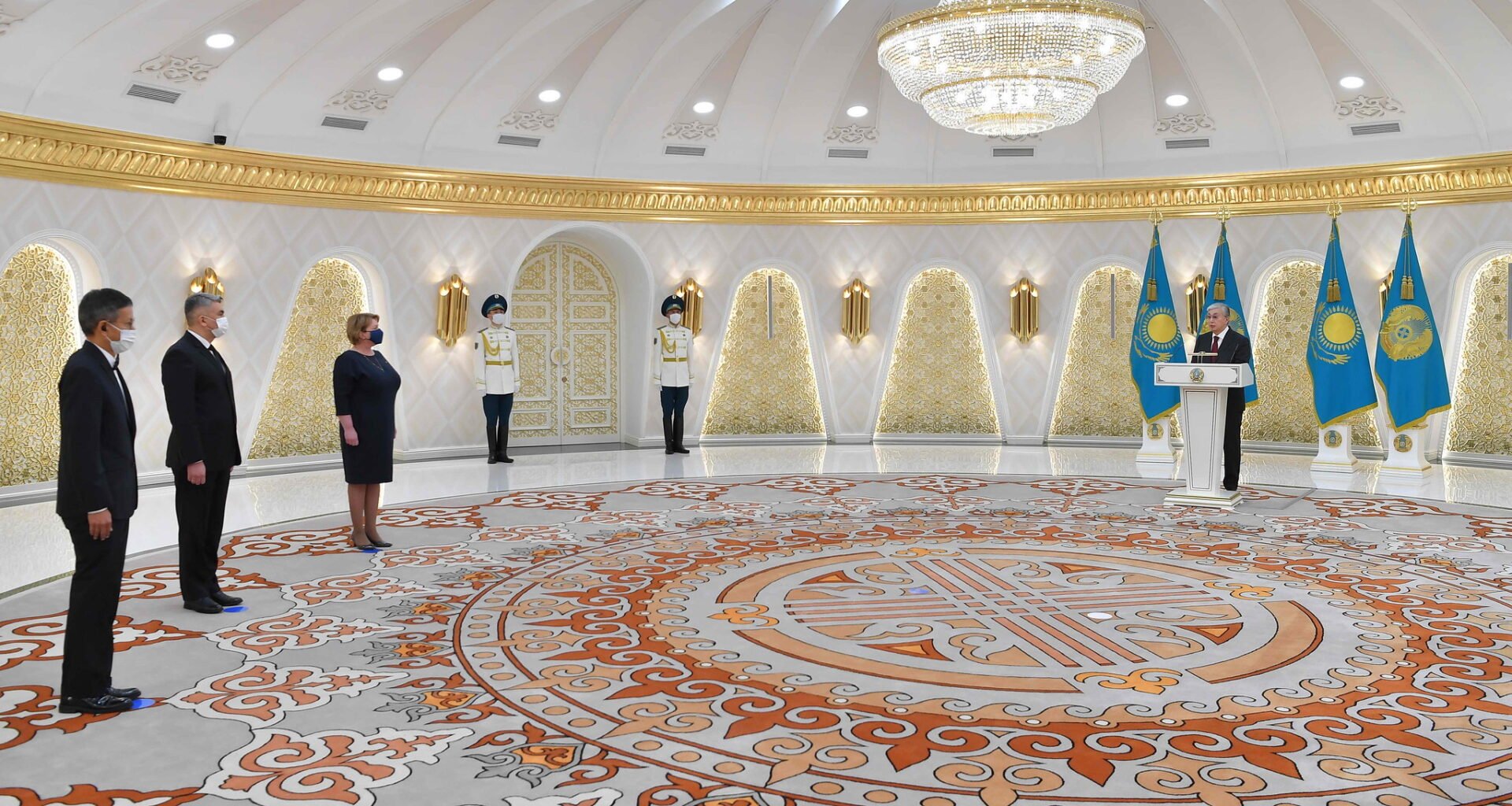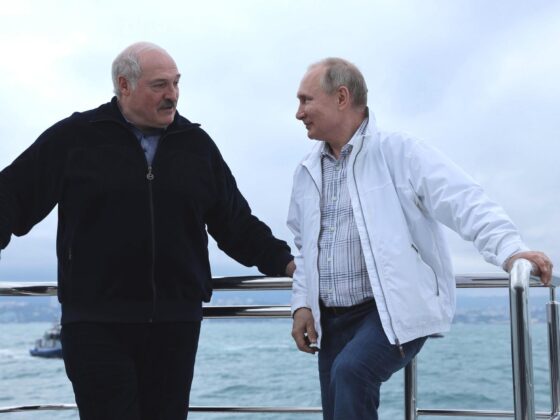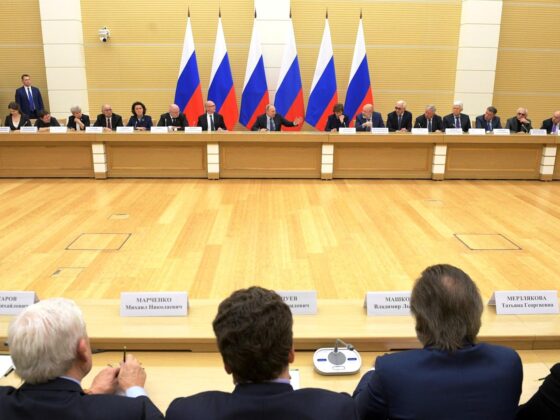Authoritarian rulers in post-Soviet Eurasia draw upon an array of security and police force mechanisms to enforce loyalty and undermine opponents. Beyond these familiar, state-centered agents of repression, we observe a distinct pattern emerging across the region: the outsourcing of violence during elite struggles over power and resources. We focus in particular on the use of provocateurs for political gain. Importantly, these informal, non-state actors, often sportsmen, have been mobilized by elites not only to defend the regime, as one might expect, but also to disrupt it. The outsourced violence during the attempted coup in Kazakhstan in January 2022—and, specifically, its application in the city of Almaty—reveals the latter, disruptive dynamics, illustrating sources of instability internal to the regime and mechanisms of authoritarian survival. Even when serious and well-resourced challenges arise within a ruling coalition, an incumbent president can still respond successfully with a counter-repressive strategy. Our analysis further suggests that peaceful demonstrations form a convenient backdrop for the outsourcing of violence. Infiltration by provocateurs works to delegitimize popular mobilization against authoritarian rulers, as well as justify intensified repression against elites and the masses. The end result is to reinforce, rather than destabilize, the regime.
January 2022
Protests spontaneously erupted in the western city of Zhanaozen on January 2, an immediate reaction to the two-fold increase in the price of liquefied petroleum gas. The government responded by reinstating energy price controls, to no avail. Protests quickly spread to 14 major cities across the country. In a clear sign that more than just the increase in gas prices was at play, protestors shouted, “Shal ket” (“Old man, out”). This refrain was an expression of open disdain for the first president and leader of the nation, Nursultan Nazarbayev, who, despite having stepped down from the presidency in 2019, was still very much in control. In an attempt to quell the protests, President Kassym-Jomart Tokayev dismissed the government and declared a state of emergency.
It was following these measures that violence overtook Kazakhstan’s largest city, Almaty. City Hall, the police headquarters, the office of the procurator general, national TV stations, and the city airport were stormed, vandalized, or set on fire. Organized mobs used bulldozers to break into banks, set up makeshift barricades, and, according to videos circulated on Instagram, distributed weapons. The extent of the violence was unprecedented, different from anything Kazakhstan had experienced since independence in 1991. Civil disobedience there had never involved the burning of government buildings or the storming of security service offices. To add to the confusion, government disruption of mass communication, the Internet, and mobile networks, and the jamming of major local news media sites left the country in a virtual information blockade.
In a televised address, Tokayev declared “international terrorist gangs” responsible for the attacks and called upon the Collective Security Treaty Organization (CSTO), led by Russia, for help. After the prompt arrival of CSTO peacekeepers in Almaty, Tokayev issued a “shoot to kill” order against protesters. By January 11, the Interior Ministry reported nearly 10,000 people detained and more than 4,500 injured, including 26 armed civilians. Official figures put the final death toll at 227. As of the writing of this memo, thousands remain in detention or missing. By labeling protestors international terrorists, Tokayev sought to justify the use of military force against unarmed civilians and subsequent repression.
The official version of events was challenged by independent media and videos posted online. Such accounts reveal that well-known civil society and opposition leaders were intentionally marginalized, monitored, and detained by the police within days, if not hours. Violent actors, in contrast, were left to wreak havoc unhindered. In the words of one journalist, when the violence in Almaty was at its peak, the police were nowhere to be found: “From the 5th to the 8th of January, looters roamed the city unrestrained… [F]or several days there was neither police nor soldier to be seen… Not one.”
Shocked at what had transpired, citizens and observers could not help but ask, how was “any of this possible?” How could Kazakhstan’s financial and cultural hub be “given up to looters overnight?” How could major administrative buildings, including the offices of the National Security Committee (KNB), be “so easily looted, with weapons falling into the hands of who knows whom?” Why were security forces, otherwise intolerant of demonstrations and minor manifestations of anti-government sentiment, unable to prevent the outbreak of chaos in the streets of Almaty? How were the police so effective at clamping down on peaceful protestors and yet so ineffective when it came to preventing the destruction of banks, businesses, and government property? Finally, why did security services “give up the city” and return only after Tokayev appealed to the CSTO?
The Elite-Provocateur Connection
Focusing on the role of provocateurs helps explain the grave turn of events, pointing to the usurpation of legitimate protest by regime actors for their own ends. The level of disorder unleashed in Almaty during the night of January 5 and, crucially, the extended absence of a decisive police response was an example of the use of provocateurs to destabilize the status quo. A subset of elites appeared motivated by two distinct but related goals: to undermine Tokayev, on the one hand, and to delegitimize popular challenges to authoritarian rule, on the other.
Multiple analyses look to first president Nazarbayev’s inner circle, specifically members of his family, as the organizing force behind the violence. In this view, outsourced violence was targeted, first and foremost, to paint Tokayev as a weak president and, possibly, to reinstate Nazarbayev’s relatives’ supremacy over Kazakhstani politics and the economy. Placed in office originally as a transitional caretaker figure, Tokayev had begun taking steps to consolidate power and to limit that of the Nazarbayev family, whose wealth and influence are well documented. At the same time that Tokayev sought to keep the ambitions of the family in check, the family was similarly working to check Tokayev, effectively “sidelin[ing] him at almost every turn in his first three years.”
While outsiders cannot know for sure what took place in the corridors of power, preliminary evidence points to members of the family as key players behind the chaos. Three relatives stand out as having a direct hand in the violence. One is Bolat Nazarbayev, who was believed to control the bazaars and markets of Almaty. The second is businessman and leader of the Aq Orda Islamic movement, Kairat Satybaldy. The third was first deputy chairman of the KNB, Samat Abish. Bolat Nazarbayev is the younger brother, and Samat Abish and Kairat Satybaldy are nephews of the first president. Human resources from all three domains controlled by the younger Nazarbayev, Satybaldy, and Abish—marketplaces, religious organizations, and security forces—were integral to the outbreak of violence.
First, ethnic Kazakhs, migrants from the rural south of the country who were affiliated with a) Almaty markets, including traders and criminal groups, and b) religious organizations and religious paramilitary groups, were mobilized to sully what had been up to then overwhelmingly peaceful protests. Second, the security forces, under the control of Abish, were de-mobilized at an opportune moment, leaving the city abandoned, rather than reinforced, in its hour of need. Almaty and the surrounding areas have been described as the votchina (“fiefdom”) of the Nazarbayev family, with nothing taking place without the family’s hand or consent—especially not a full-scale riot culminating in the collapse of city services.
As peaceful protestors called for the dismantling of the Nazarbayev family’s hold over economy and politics, provocateurs instigated by the same family were seeking to usurp the protests for their own ends. In Almaty, there were two “different events” being led by “two different segments” of society: legitimate, spontaneous protests organized by citizens, and a group of about 500 “inspired provocateurs.” Provocateurs recruited from markets, religious organizations, and criminal groups embarked upon mass violence not to bring down authoritarian rule, but to ensure the first family’s longevity in the face of growing popular discontent and the slippage of power and resources away from the Nazarbayev clan. Outsourced violence was, in other words, “aimed at Tokayev, not Nazarbayev.” Thus, when Tokayev gave the order for the security forces to implement an emergency curfew and rein in those bent on destruction, no one responded. Simply put, “his order was not obeyed.”
Conclusions and Implications
The Nazarbayev family failed to consider that Tokayev would turn to another, albeit desperate, option to reposition himself as firmly in control—requesting outside assistance in the form of the CSTO. While this decision is likely to have difficult long-term consequences for the Tokayev presidency and for the country, it was the only viable alternative available at the time. Well aware of the disloyalty of his own security services, Tokayev had no other choice. By calling in CSTO forces and looking to President Vladimir Putin for support, Tokayev severed his dependence upon his predecessor, Nursultan Nazarbayev; without the first president to protect them, the sway of the Nazarbayev family was effectively curtailed.
Outsourced violence in Kazakhstan is far from unique but part of a broader contemporary and historical pattern. Provocations are increasingly attractive as means for achieving political ends. These range from undercover security officers “who infiltrate social and political movements to manipulate their messaging, instigate violent tactics and undermine public perception” in the UK, Italy, Ireland, Germany, France, Canada, and the United States to paramilitaries and death squads exercising privatized regime-supporting extralegal violence in African and Latin American dictatorships. In the post-communist space, the legacy of Soviet disinformation and branding of the uprisings in East Germany in 1953, Hungary in 1956, and Prague in 1968 as fascist coups and NATO plots have been used to justify military interventions. The tried-and-true Soviet practice of mobilizing industrial workers to quell protests reappeared most visibly during the 2013-2014 Euro-Maidan protests in Ukraine. There, a new term, titushky, was coined to denote paid pro-government agents who infiltrate protests and provoke retaliatory police violence. Some years earlier, in Kyrgyzstan, provocateurs described as belokepochniki (“white caps”) were observed during the 2005 Tulip Revolution. The use of provocateurs in Kyrgyzstan expanded significantly thereafter, with various elites mobilizing criminal groups against competitors, including those located within the regime.
What has remained unchanged, however, is the authoritarian regime’s claim that popular mobilization is dangerous and destructive. The provocation of violence of 2022 has become a justification for presidential consolidation, heightened repression, and the tightening of restrictions on political expression and civic activism. Regime in-fighting is frequently regarded by analysts as a sign of authoritarian weakness and a potential source of political opening. Yet, in the case of Kazakhstan, fissures within the regime have had the opposite effect, working to bolster the authoritarian political system and preserve authoritarian methods of control.
Dinissa Duvanova is Associate Professor of International Relations at Lehigh University.
Barbara Junisbai is Associate Professor of Organizational Studies at Pitzer College.
PONARS Eurasia Policy Memo No. 781











